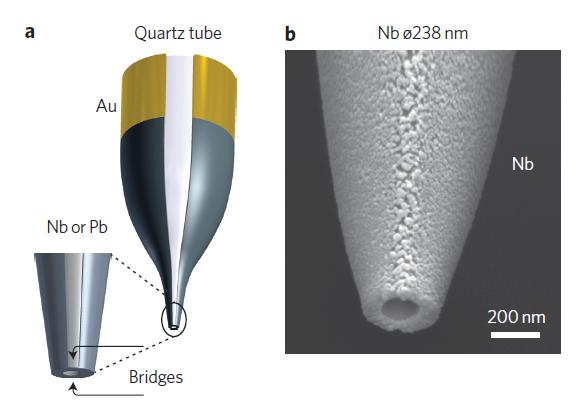A nanoscale Superconducting Quantum Interference Device (SQUID) on Tip (SOT) that enables high spatial, magnetic, and thermal resolution for local imaging. An unprecedented level of resolution and sensitivity is achieved by minimizing the sensor size (~40 nm) and the distance from the sample (several nanometers). The ability to detect the magnetic moment of a single electron is of key technological importance for applications ranging from electronics to biotechnology and is especially vital for large-scale fabrication, inspection, and optimization of quantum devices.
- Scanning Probe Microscope
- Cryogenic Thermal Imaging (mK Temperatures)
- Metrology Tools for Quantum Circuits
- Imaging of Electrical Currents
- High Thermal Resolution
- Increased Thermal Sensitivity of 4 Orders of Magnitude
- Simple Fabrication
- High Field and Spin Sensitivity
- High Bandwidth
The researchers successfully fabricated SOT from Nb and Pb and were granted a patent in the US. Future technological efforts will focus on enhancing SOT durability and industrializing the fabrication process.

a) Schematic presentation of the pulled quartz tube with two Nb or Pb superconducting leads connected to Au electrodes. b) SEM image of the Nb SQUID-on-tip.


